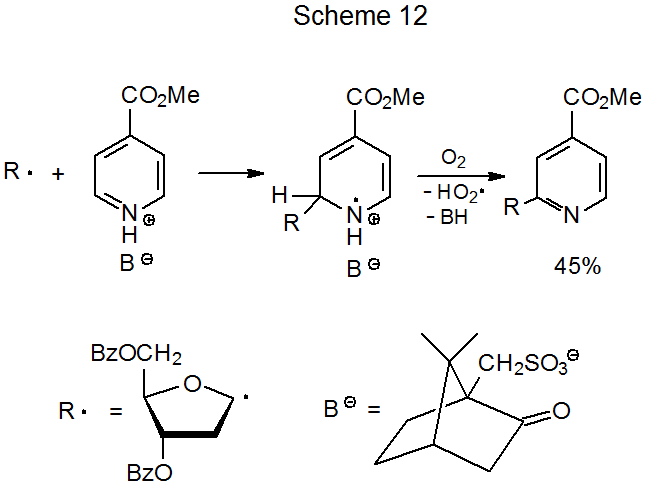V. Heteroaromáticos protonados
- Page ID
- 80359
Los radicales piranos-1-ilo y furanos-1-ilo se agregan a los heteroaromáticos protonados para producir derivados de C-nucleósidos. 48—54 Un mecanismo propuesto para este tipo de reacción se da en el Esquema 12. 50 La protonación aumenta drásticamente la velocidad de adición de un radical centrado en carbono a un compuesto heteroaromático; de hecho, la velocidad es tan rápida que no es necesario realizar la reacción en una atmósfera inerte. La reacción no solo tiene lugar en presencia de oxígeno molecular sino que el oxígeno es un probable participante en la etapa de rearomatización de este proceso (Esquema 12). En reacciones de este tipo el radical inicialmente formado (R·) generalmente se genera por fotólisis de una O‑ acil-N-hidroxi-2-tiopiridona (eq 15). 48 (Las reacciones de las O- acil-N-hidroxi-2-tiopiridonas se discuten en el Capítulo 13.)

.png)

